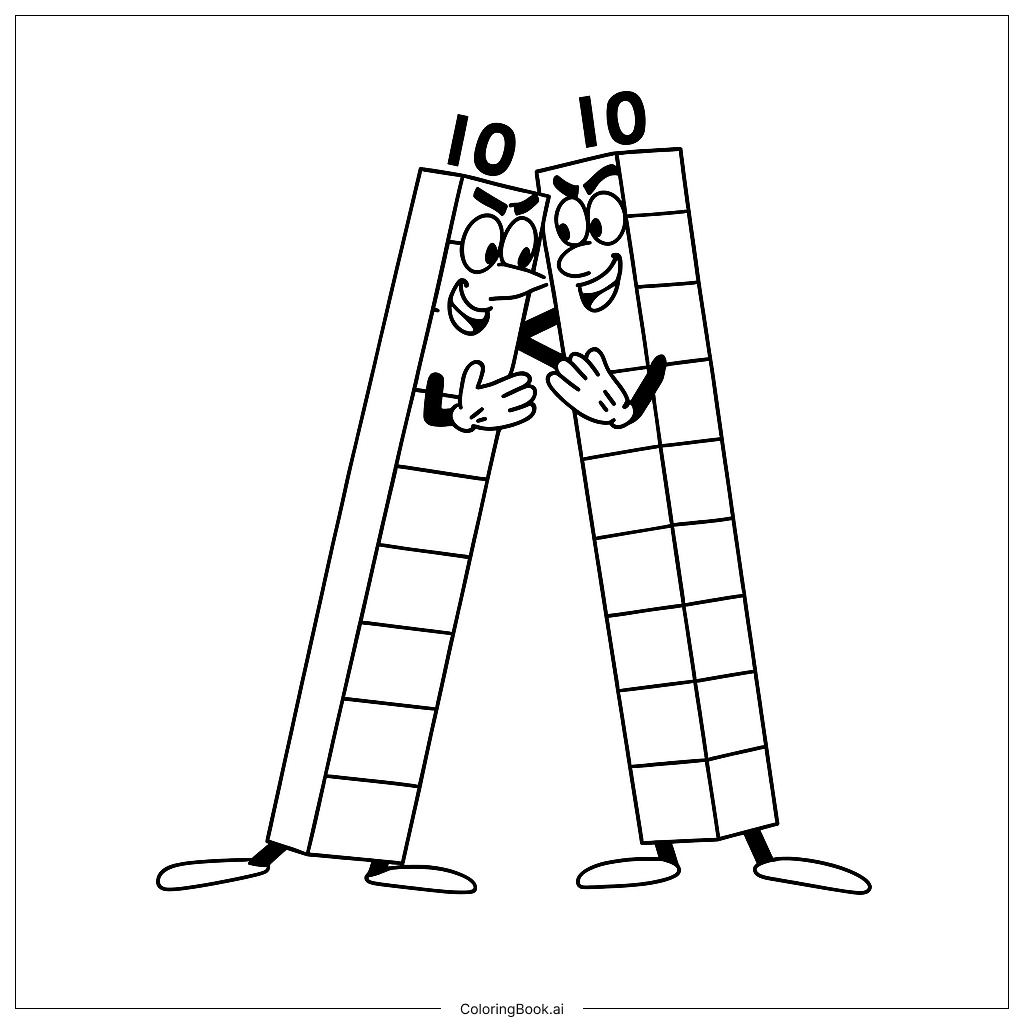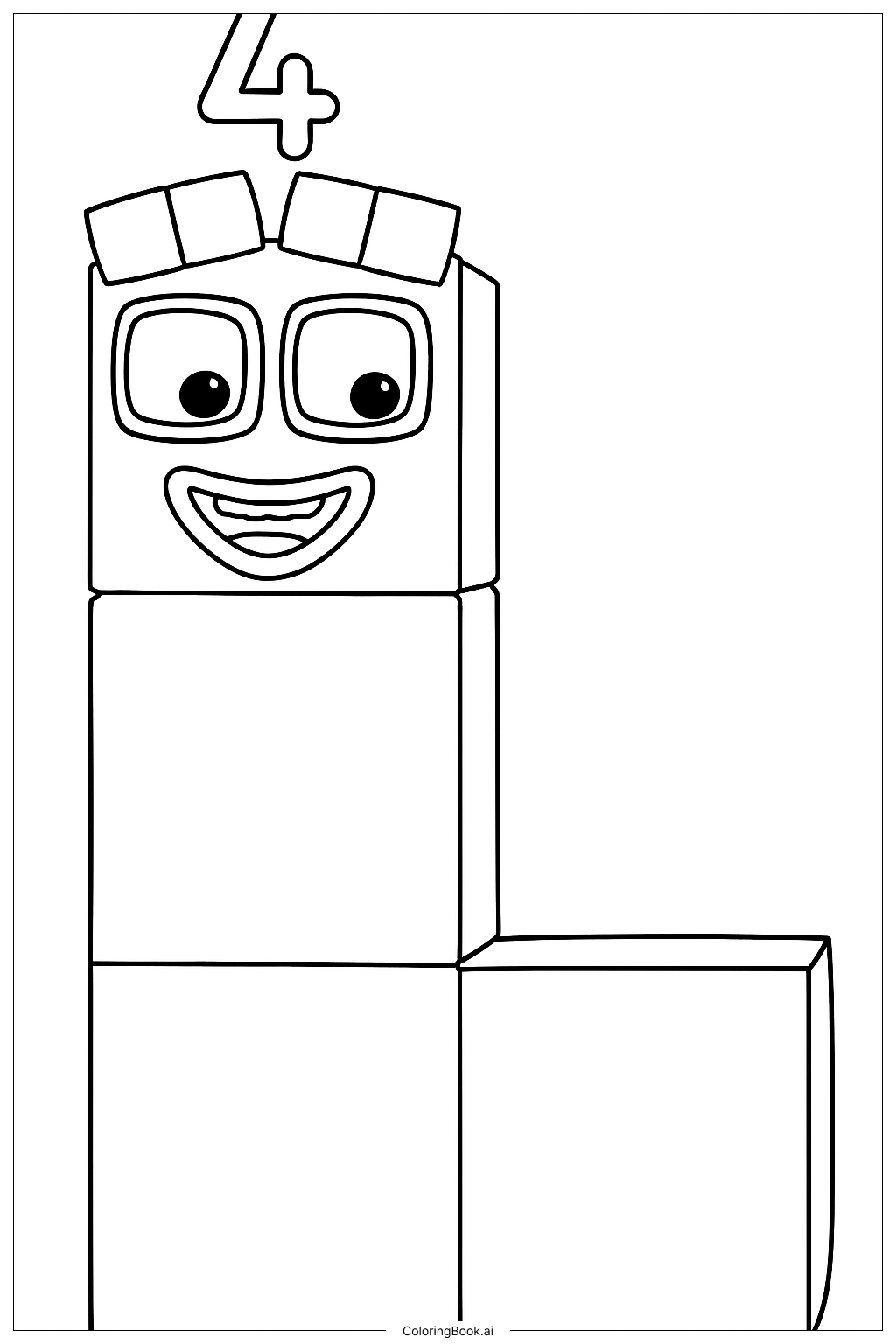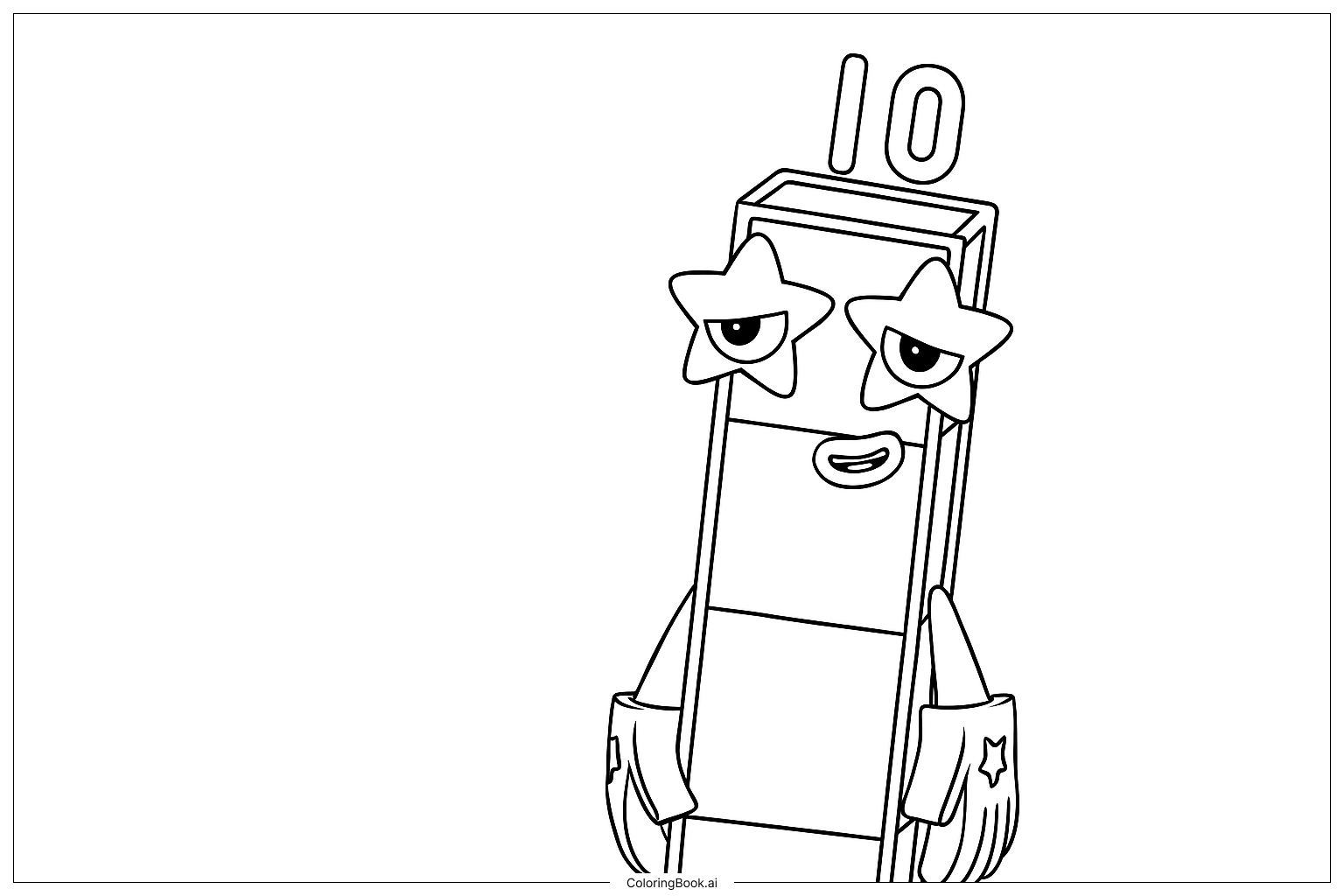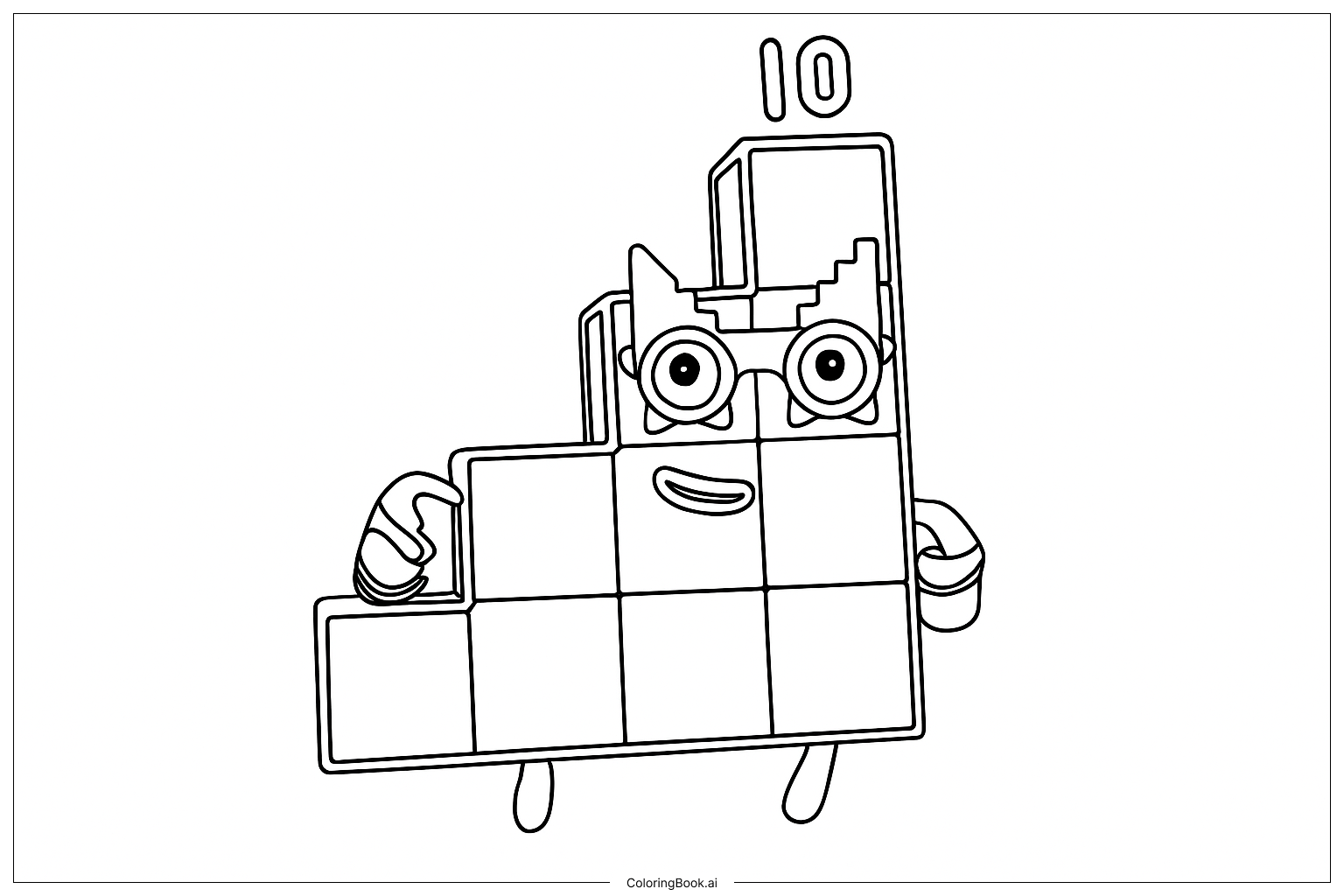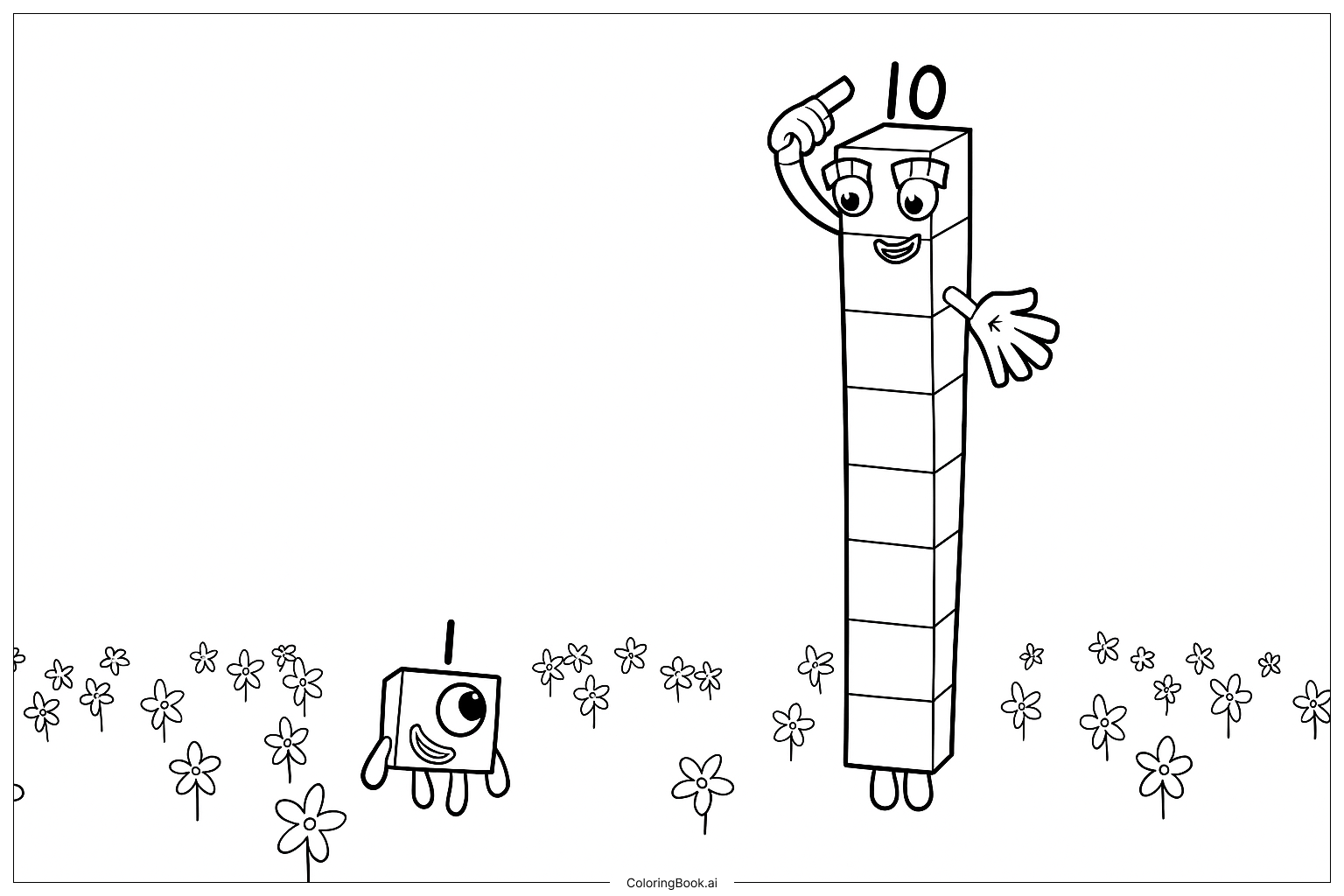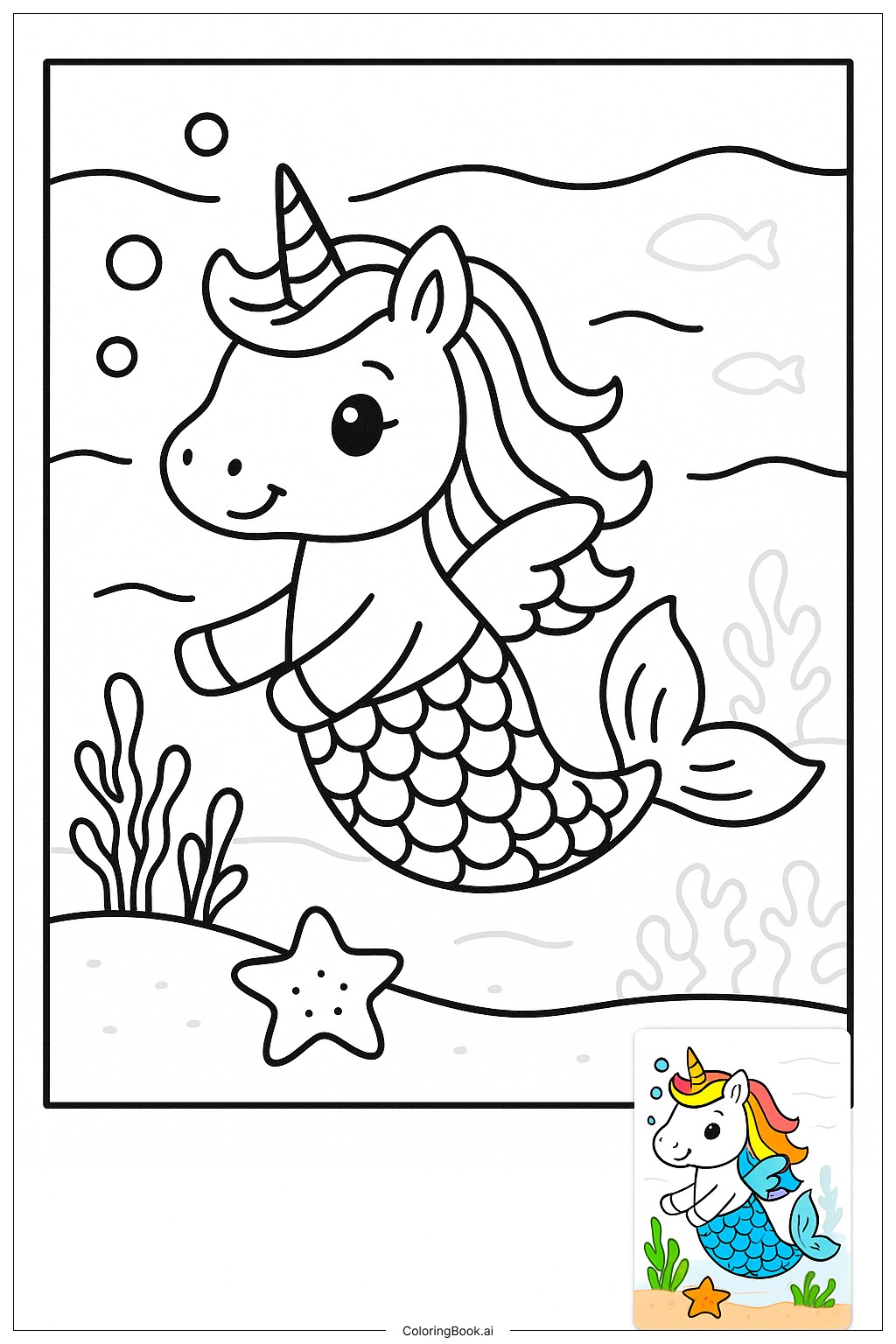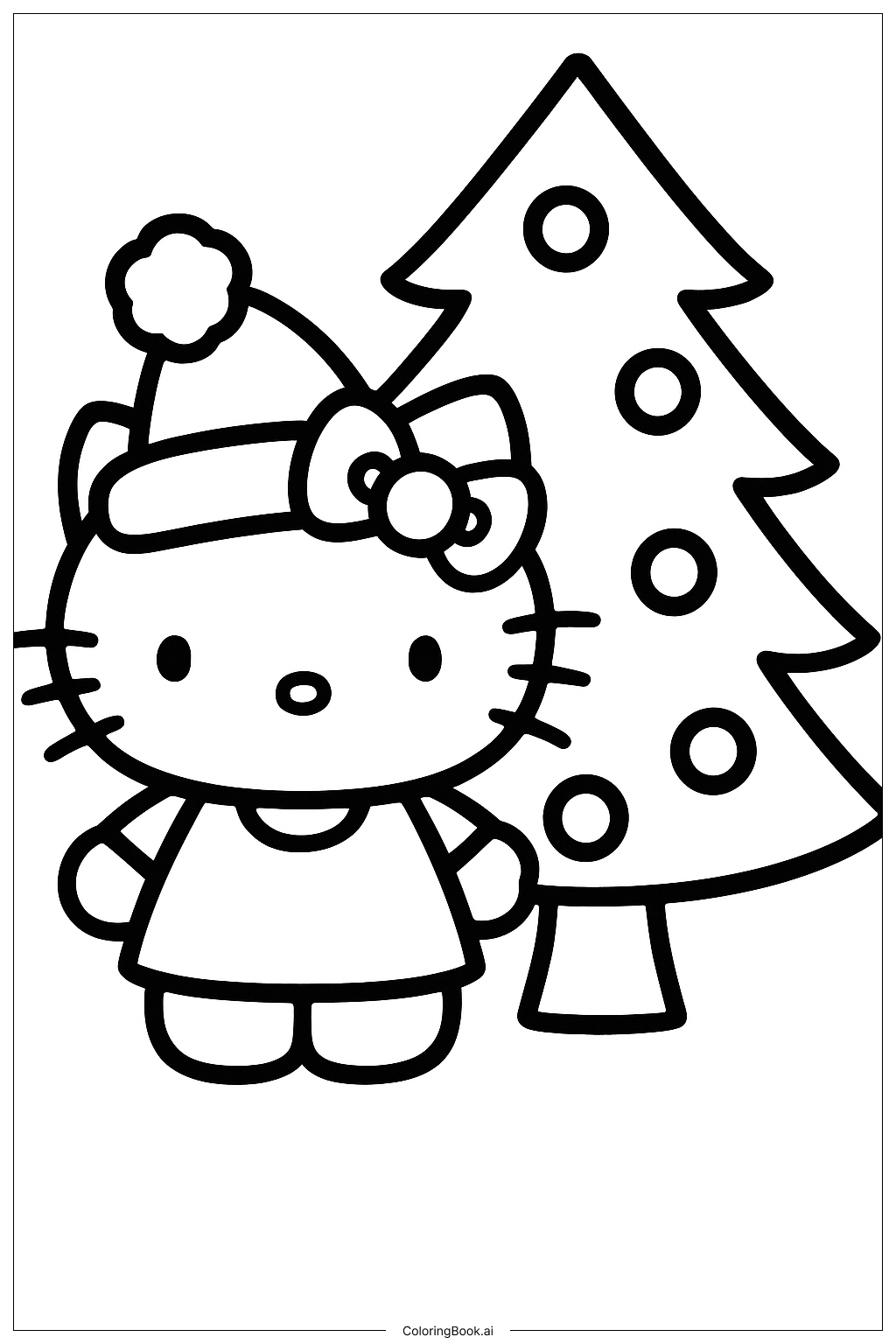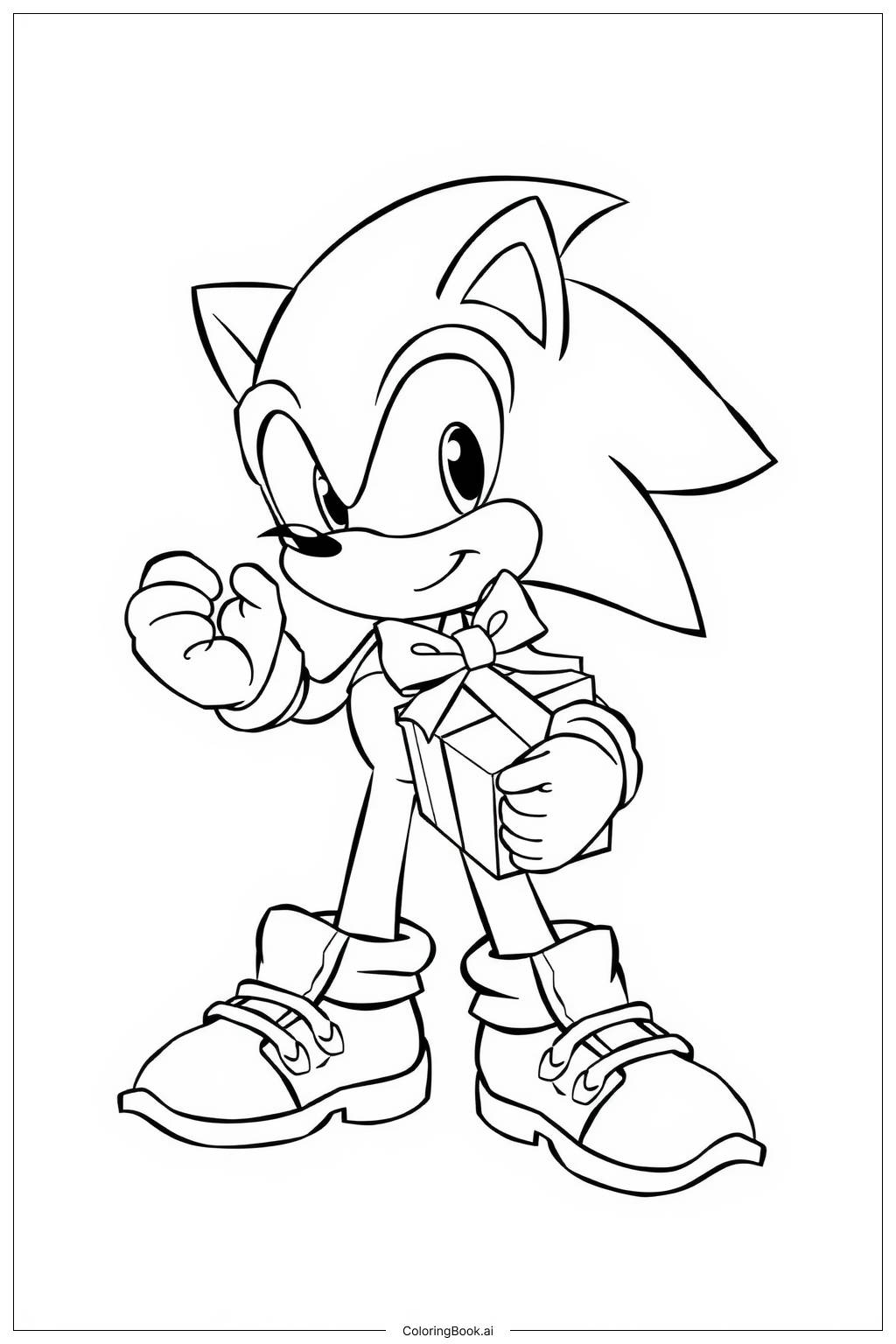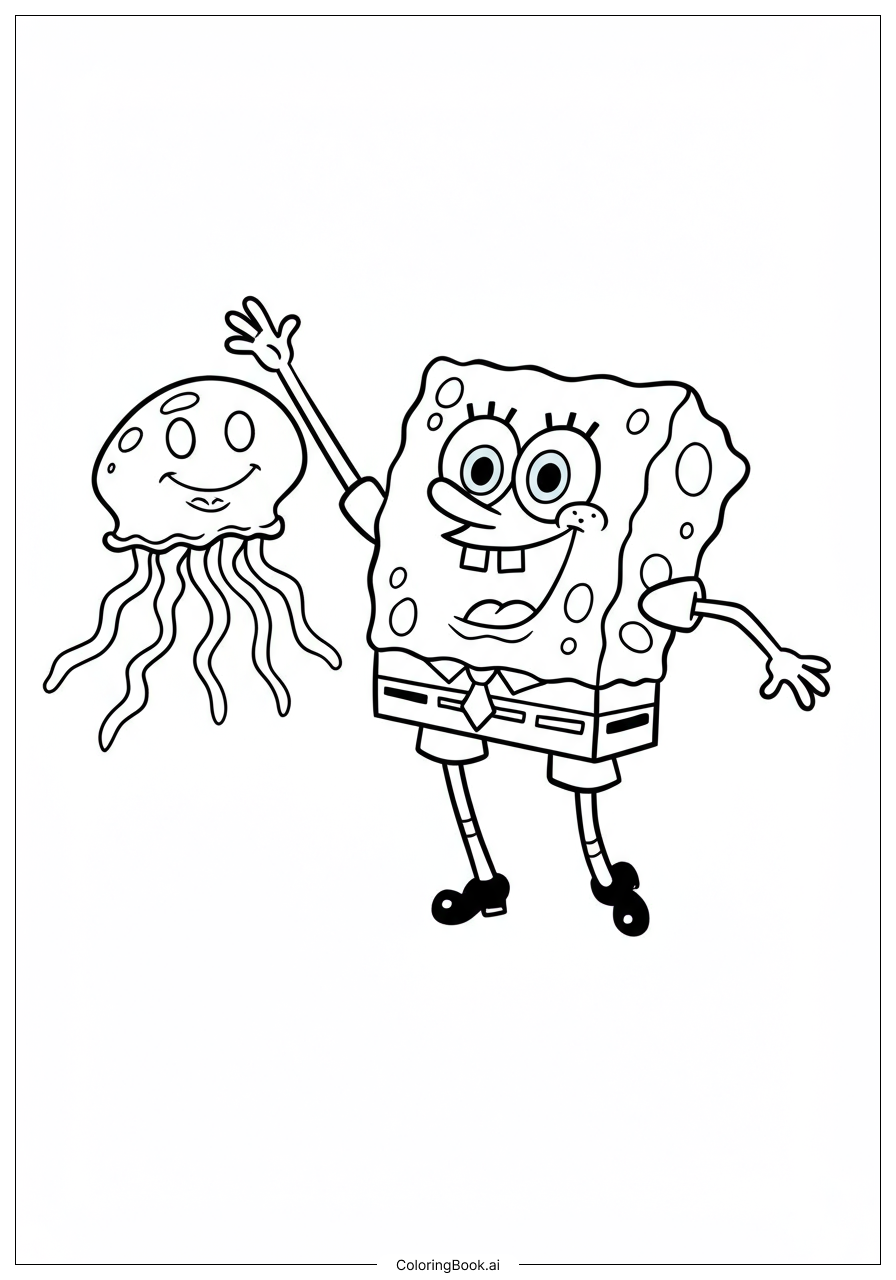Coloring tips: How to color Dancing Tens coloring page well?
Use bright colors to make the Numberblocks stand out. You can color each small square in a different shade or use the same color for the entire block. For example, one Numberblock can be orange and the other red. The hands and feet can be colored in black or dark gray to create contrast. Use white or light colors for the eyes and add black for the pupils. You can color the eyebrows black or dark brown. Feel free to add fun background colors like light blue or yellow to make the scene lively. Try to stay inside the lines for a neat look.
Coloring challenges: Which parts are difficult to color and need attention for Dancing Tens coloring page?
1. Coloring small squares evenly can be challenging, requiring patience and careful hand control.
2. The arms and fingers are thin and have to be colored carefully to avoid overlapping lines.
3. The facial features, like the eyes and eyebrows, are small and need precise coloring to keep the expressions clear.
4. Making sure the number "10" stays visible while coloring the blocks can be tricky.
5. Coloring two tall blocks next to each other in different colors without mixing can be difficult for young children.
Benefits of coloring books: Advantages of drawing Dancing Tens coloring page
Coloring this picture helps improve fine motor skills as children need to color small details carefully. It encourages concentration and patience while staying inside the lines. The image promotes number recognition by focusing on the Numberblocks for ten. Coloring two characters dancing together can inspire creativity and storytelling, making it fun to imagine their dance moves. It also helps children learn about colors and contrast while making the scene lively and interesting.
